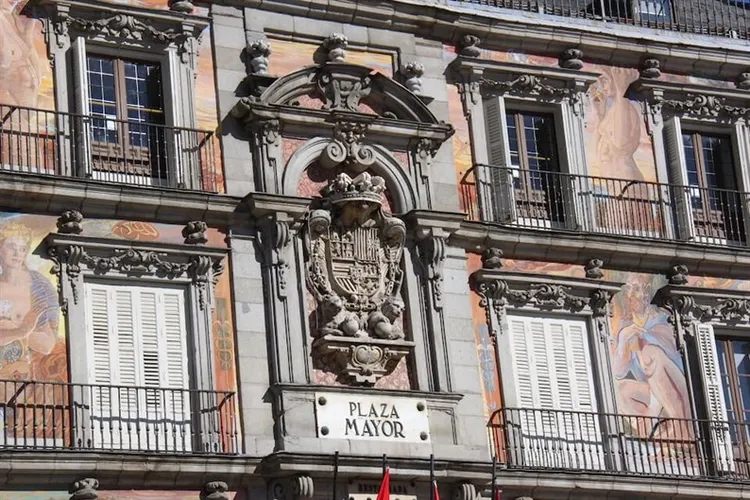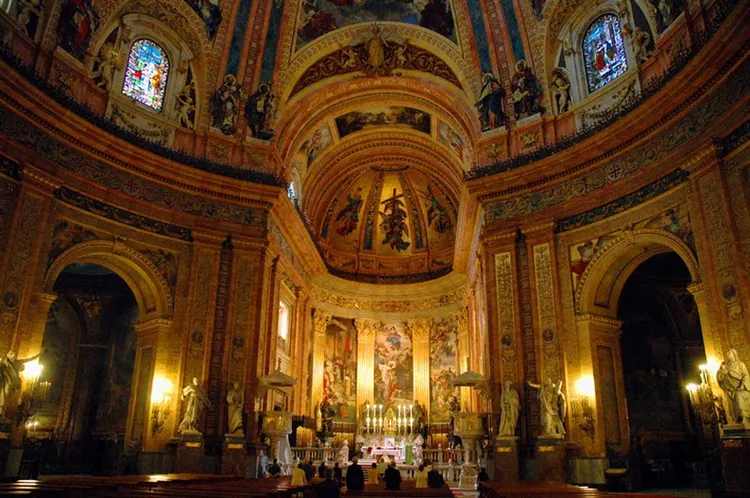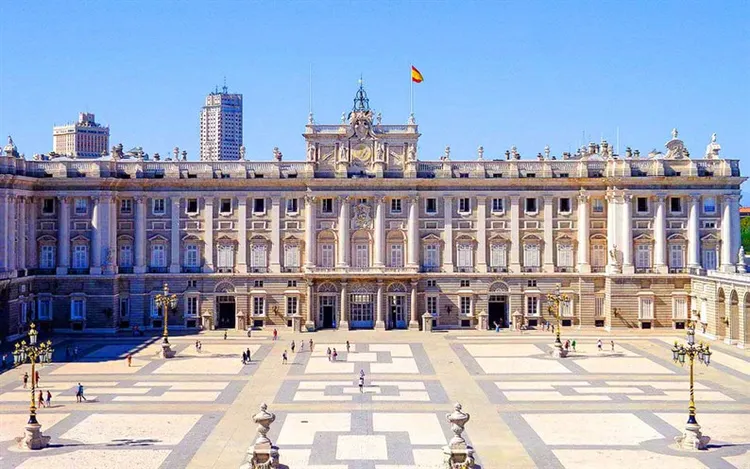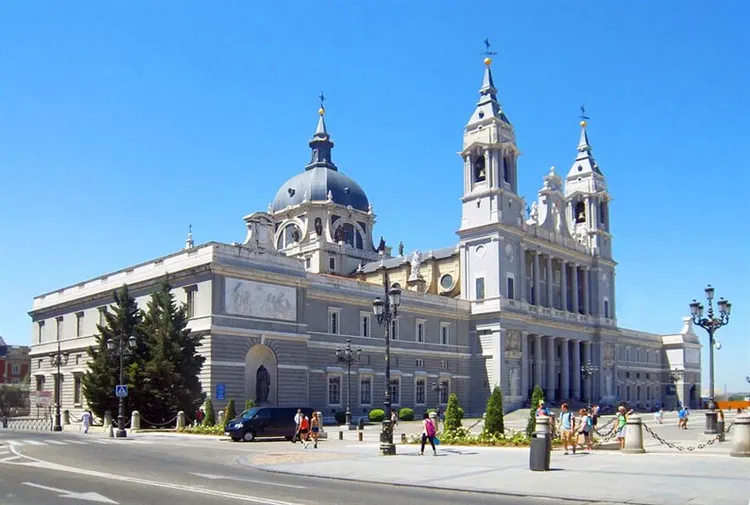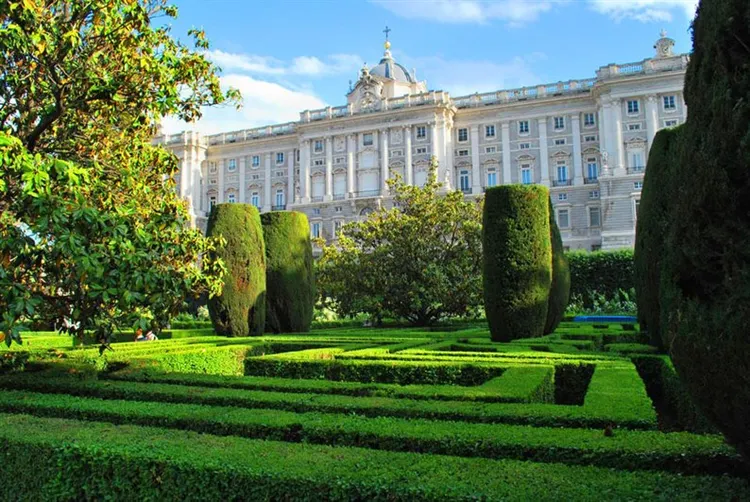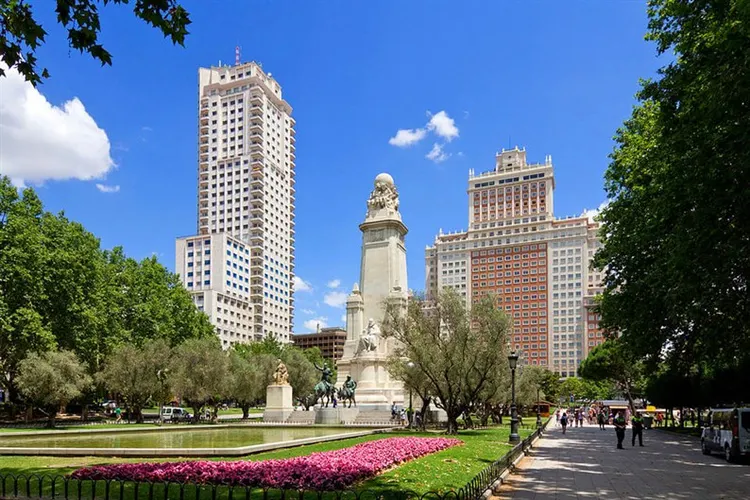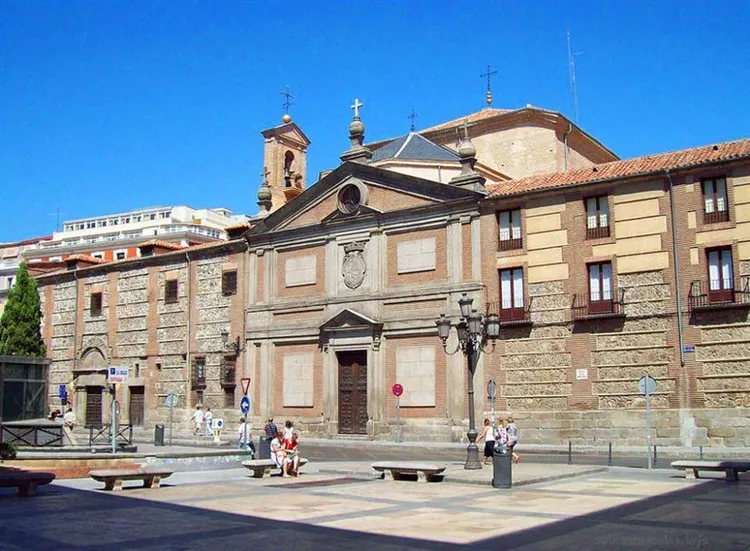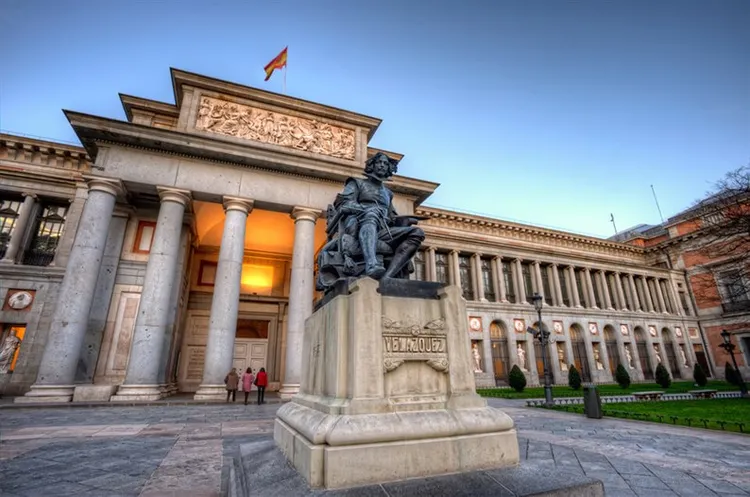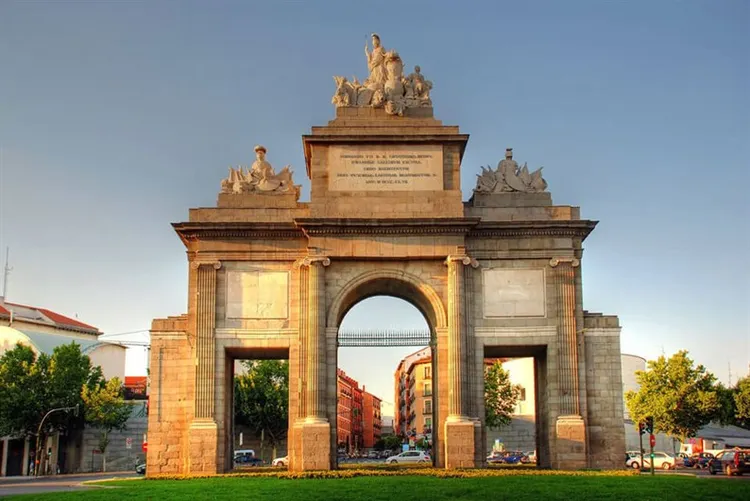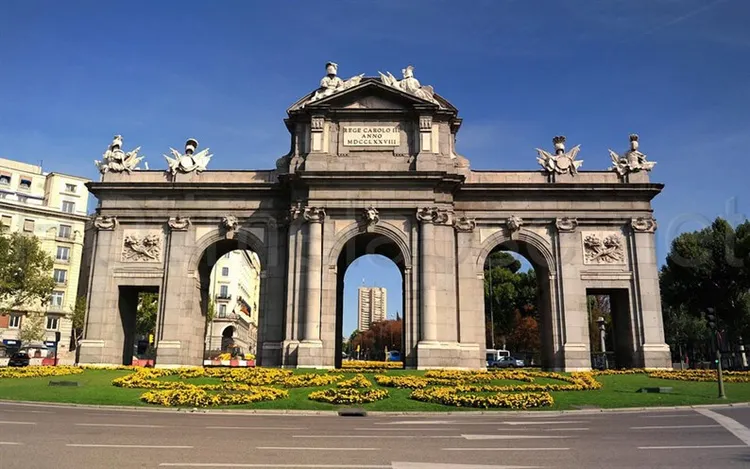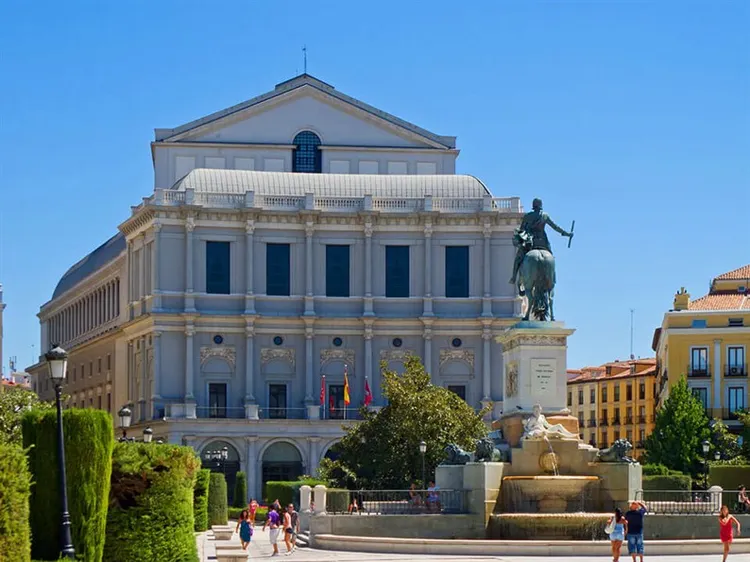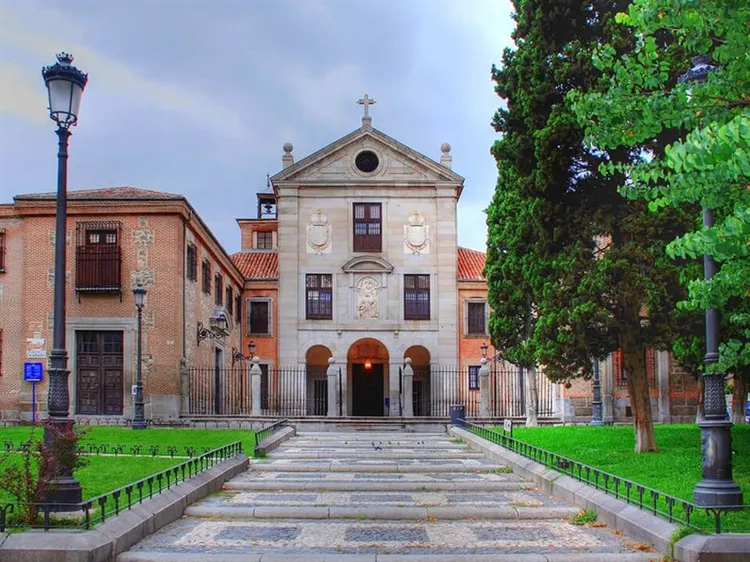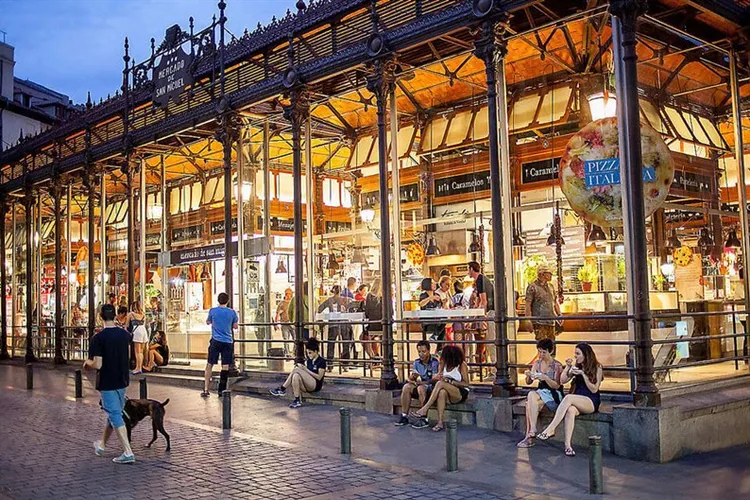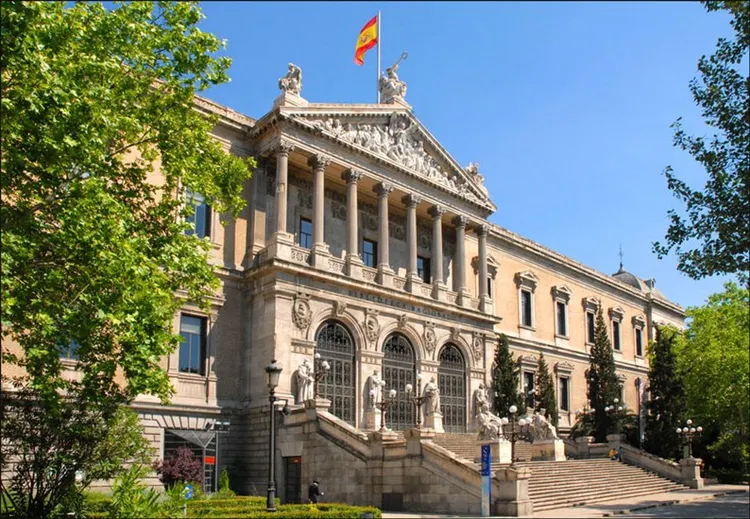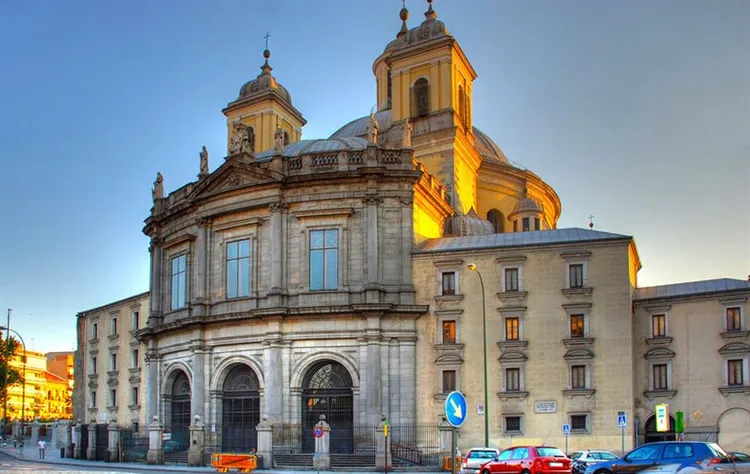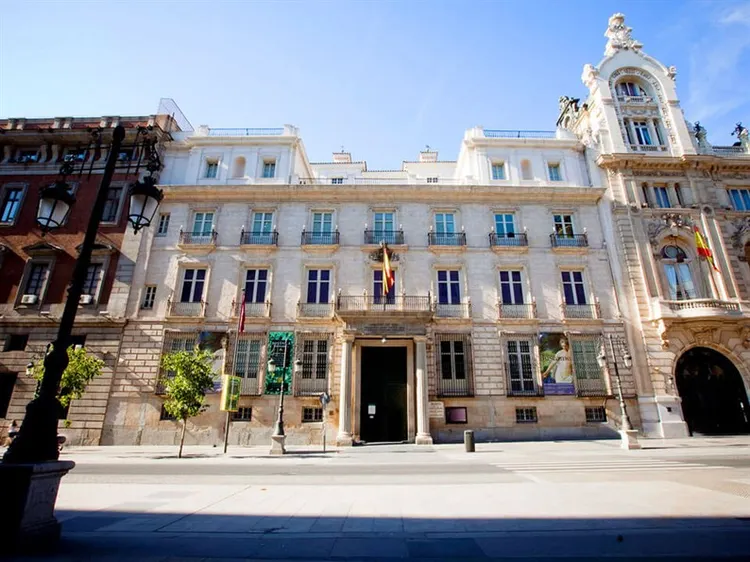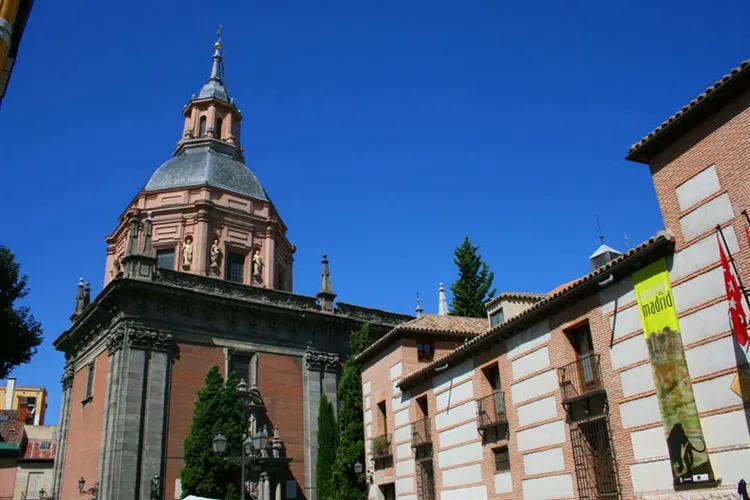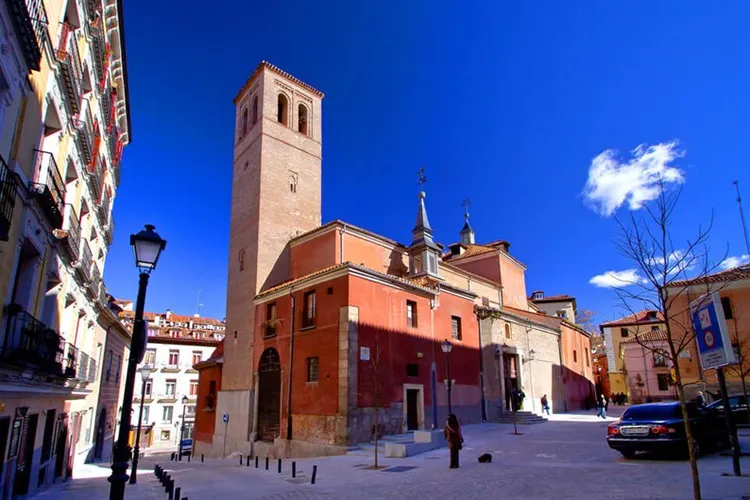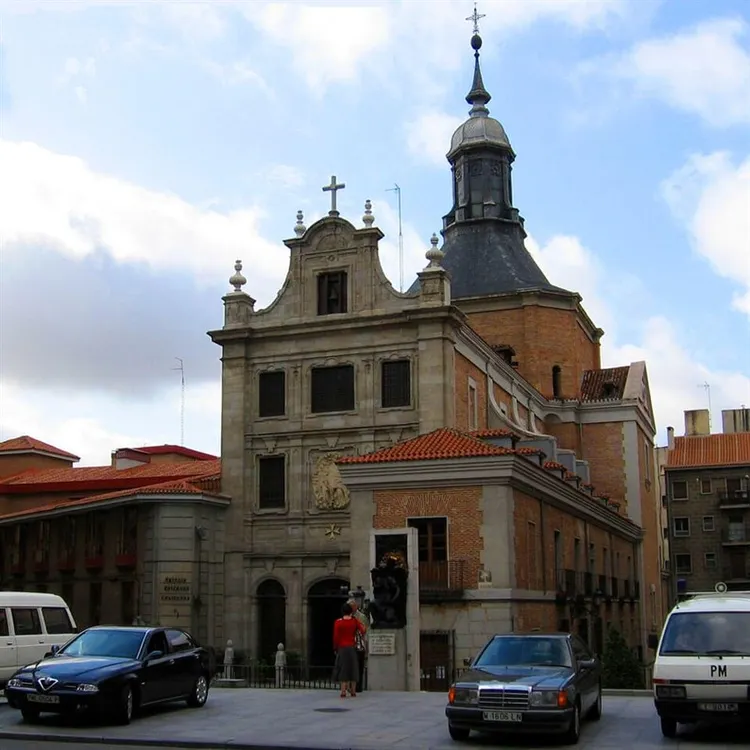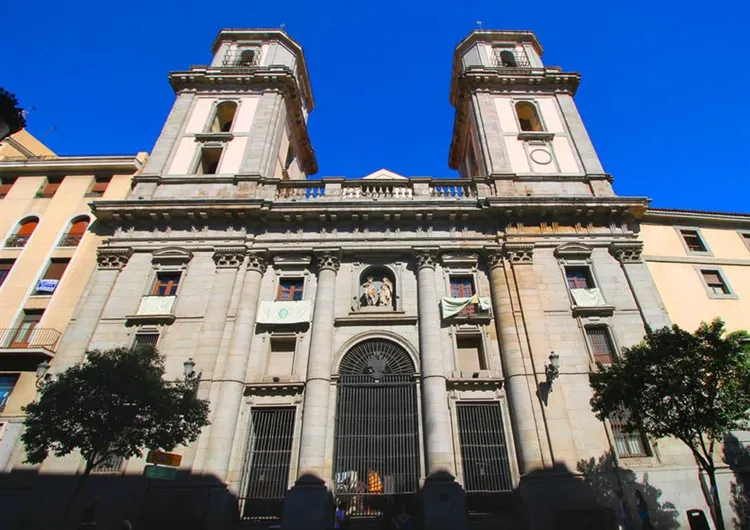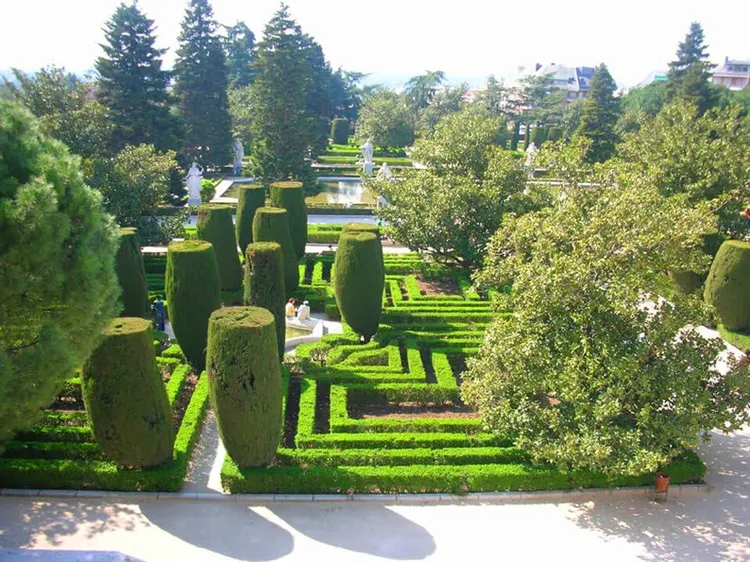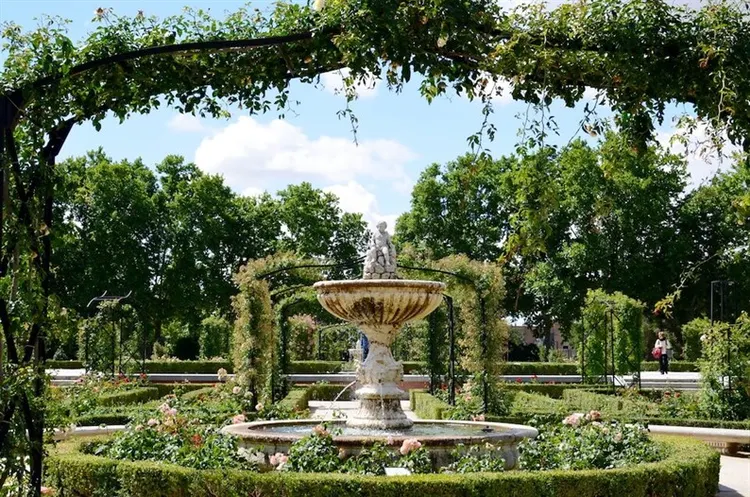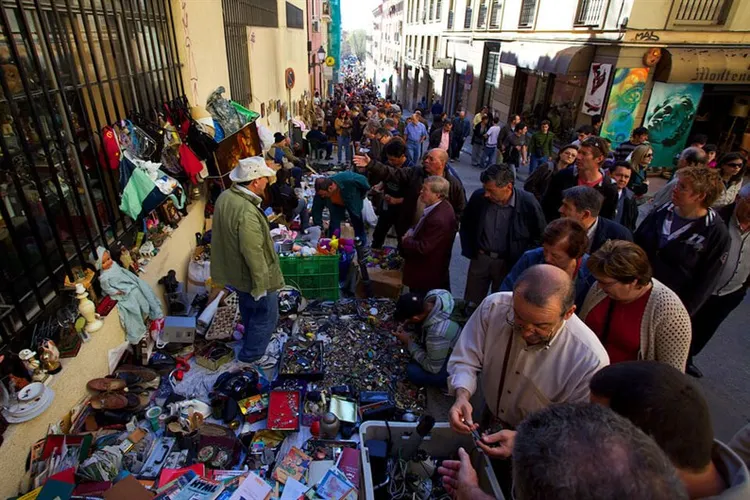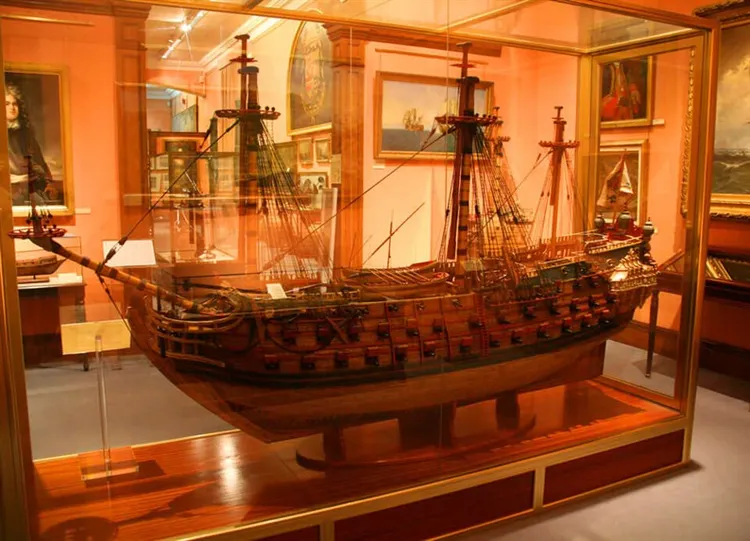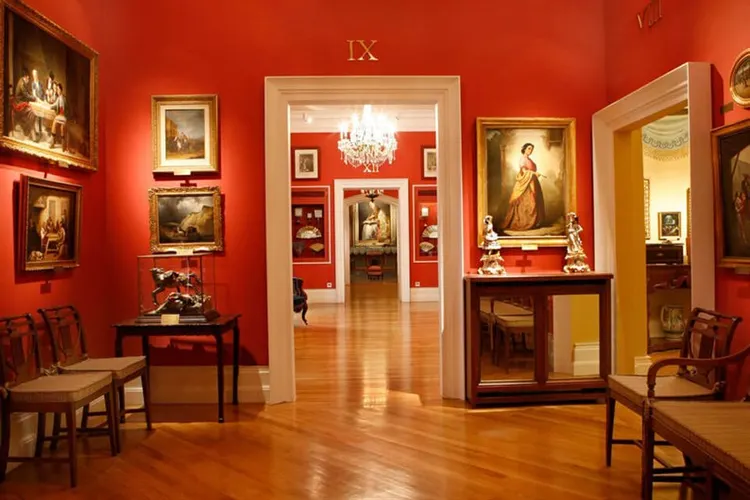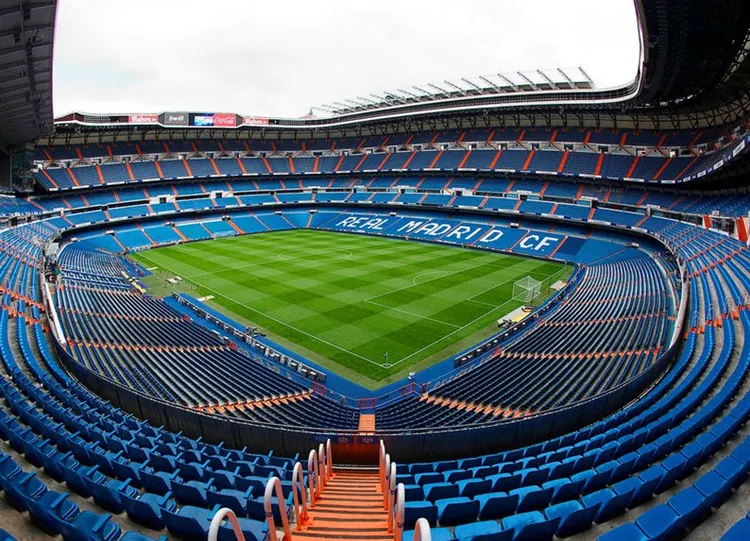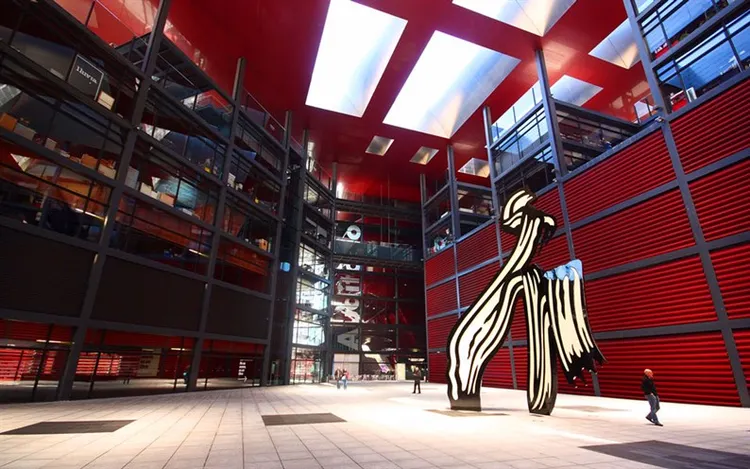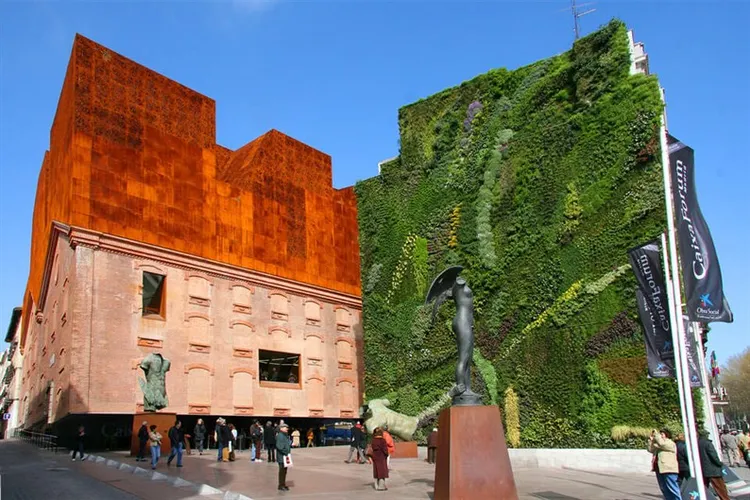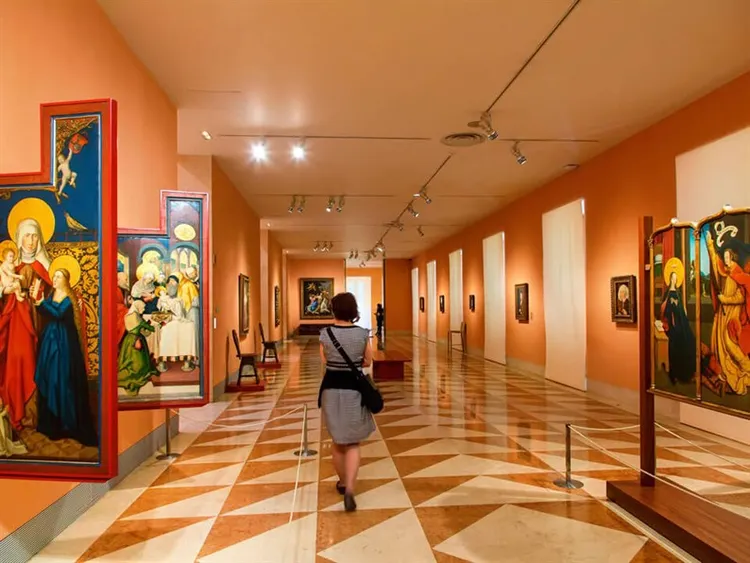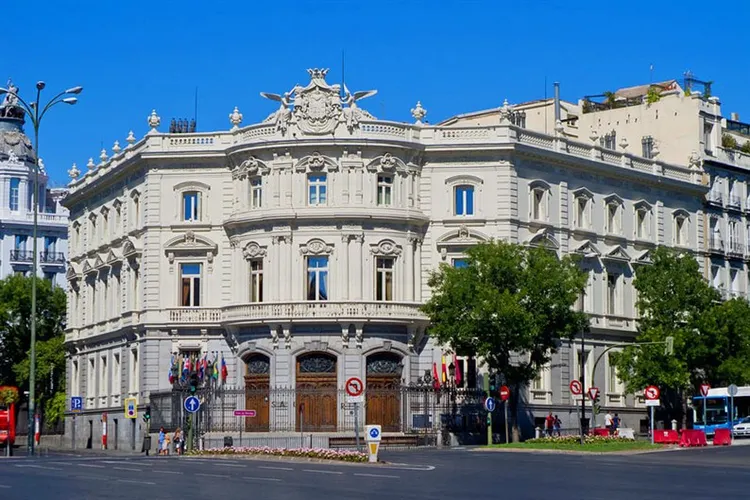Sights of Madrid – 30 most interesting places
Madrid is one of the most beautiful cities in Spain. It harmoniously combines modern business centers and ancient medieval quarters, many temples and cathedrals, real monuments of world architectural art, add a special atmosphere to the city. Our guide will tell you about the most interesting places. It will be very comfortable for a traveler to move around the city, because the public transport system operates strictly on schedule, connecting remote parts of the city with each other.
Plaza Mayor
One of the most famous European squares. Now it is called the main one, and the poet Lope de Vega called it “The Navel of Spain.” The Plaza Mayor was built at the beginning of the 17th century during the reign of Philip III. Now the monument to the king stands in the center of this city attraction and is an integral part of its architectural ensemble.
The square is located in the central part of the capital. This is the intersection of Calle de Toledo and Calle de Atocha Plaza Mayor 2801. This area is called “Austrian Madrid”. Plaza Mayor is surrounded by old three-story buildings with lots of balconies. This place accommodates a huge number of people – up to fifty thousand. During the time of the Habsburgs, the square was the city's stage. The most massive entertainment events were held here: knightly tournaments, weddings of noble citizens, bullfights and public executions.
Now it is a lively place where local residents and guests of the city are very fond of relaxing. There are many shops with souvenirs, cafes with delicious pastries and fragrant coffee, street musicians and artists. On weekends, antiques, coins and other valuables are brought to the square.
Забронировать индивидуальный трансфер из аэропорта до отеля за 3 517 RUB
Basilica of Saint Michael
A unique monument of architecture in the Baroque style. In November 1984, the King of Spain issued a decree in which this object was given the title of National Historic Monument of Spain. The object is located in the central part of the “Old Madrid”, built in 1739 at the direction of the Archbishop of Toledo, who provided funding for the construction in the amount of 1421 thousand reais.
The basilica was built for 7 years with the participation of several architects. Chief among them is the Italian Santiago Bonavia, who was personally invited by King Philip V of Spain in 1731. The architect Teodoro Ardemans began the development of the project, created the first sketches of the future masterpiece, and the final stage of construction was led by Virgilio Rabaglio.
The Basilica of St. Michael has an unusual architecture – the shape of a Latin cross, a domed facade, which combines several sculptural compositions. Two spiers rise above the facade, decorating the towers in oriental style. Inside, the basilica is richly decorated with frescoes, paintings by great painters, ancient sculptures, moldings and carvings. At the end of the 20th century, the building was decorated with stained-glass windows and sculptural images.
Royal Palace
The main metropolitan attraction. This is one of the largest operating European residences of the royal family. It was built on the site of a city fortress, which was not only a defensive structure, but also the place of permanent residence of the Spanish kings. After the fire that destroyed this building, the best architect of Spain, Filippo Juvarra, developed a construction project that surpassed both Versailles and Buckingham Palace in size.
Construction began during the reign of King Philip the Fifth, the first representative of the Bourbons. The new palace was built from 1738 to 1751. Its construction was completed during the reign of Charles the Third. This monarch was a great admirer and connoisseur of the art and culture of his native kingdom. Therefore, the best creations of European culture were collected in the halls of the palace.
Now this unique masterpiece of Spanish culture is used by the royal family exclusively for official ceremonies and receptions. Official celebrations are held here. The rest of the time, the halls of the Eastern Palace (as it is called in Spain) are open to tourists all year round.
Cathedral of Almudena
A majestic building, which is considered part of the Palace complex. It echoes in style with the Royal Palace, which stands next to the Armory Square. The construction of this cathedral was complex, lengthy, during the Civil War it was generally suspended. From the laying of the first stone (in the 80s of the 19th century) to the completion of work in the 90s of the 20th century, a lot of time passed: rulers, architects, tastes and preferences changed.
As a result, the cathedral can be considered a unique creation of neoclassicism, and its magnificent dome is an example of the new baroque. It has significant dimensions – the length exceeds 100 m, the height is more than 70 m, but does not make a cumbersome impression, but only emphasizes the greatness of Catholicism. This is the only Spanish cathedral that was consecrated by Pope John Paul II. The temple has a rich decoration: the neo-Gothic style of interiors, a marble altar, a crucifix of the 17th century and paintings, sculptures and decorations by the great masters of past eras (Francisco Rizzi, Juan of Burgundy, etc.).
Sabatini Gardens
The creation of the landscape master Fernando Mercadal, which is dedicated to the memory of another brilliant Spaniard – the architect Francesco Sabatini. The gardens occupy a significant area – 2.5 hectares and are located on the north side of the Royal Palace. This green island is made in the neoclassical style – it amazes with perfection and forms, the strictness of the geometry of plantings and alleys, the impeccable design of green spaces: coniferous plantings are professionally trimmed, elderberry and boxwood bushes are turned into ideal labyrinths, the garden is fragrant with lilies and magnolia, gives coolness on a hot day and fills the space with ringing bird voices.
The construction of the Sabatini Gardens began in 1933 and continued with varying intensity until 1978, when King Juanos Carlos I of Spain held their grand opening ceremony. One part of the garden has a beautiful pond. Statues of Spanish kings are installed here, there is a picturesque staircase that leads to the Madrid street. This picturesque place is most of all, according to most tourists, suitable for memorable photos.
Plaza of Spain
It is located in the central part of the city and serves not only as a place of rest for residents and guests of the city, but also as a convenient transport interchange. The decision to make a city square on an area of 36,900 square meters, clearing this place of old buildings, was made at the beginning of the 20th century.
Plaza de España is one of the most beautiful sights. It is decorated with fountains that are illuminated at night, a beautiful Stele and a sculptural composition dedicated to the famous Cervantes and his characters (Don Quixote and Sancho Panza). The architectural ensemble is complemented by the appearance of two high-rise buildings. These are the “Tower of Spain” and the “Madrid Tower”, which are considered the visiting card of the city.
There are enough places to relax on the square: comfortable benches and powerful trees with a rich green crown, which give coolness on a hot day. This is one of the most favorite places for recreation and entertainment – during the holidays, fairs and holiday sales are held here.
Monastery of Descalzas Reales
The uniqueness of this monastery is that it is located in the royal palace, in the capital of Spain. Founded in the 16th century (1559), the most famous Spanish architects of the time took part in its construction. The Order of St. Poor Clara settled here, and the monastery complex was intended exclusively for the needs of the aristocratic elite.
This monastery is considered the richest in Europe because all the valuables it has cannot be spent or sold. Therefore, works of art, other values that the Order has, remain here forever. Ordinary tourists can see the treasures accumulated within these walls for the past four centuries. Here is a unique collection of ancient religious objects, sculptures, paintings, unique furniture, etc.
The monastic buildings survived the four hundredth anniversary and are now included in the list of architectural structures of particular value to the culture of Spain – in the List of National Treasures.
National Prado Museum
This museum complex is inferior in size to the famous Louvre and the Hermitage, but in terms of the number of masterpieces of world art it becomes next to them. Despite the small (relatively) size – only 53,000 square meters, 1300 works of painters are on display here, and about 7 thousand masterpieces are stored in closed storerooms. It is within these walls that the complete collection of the European school of fine arts is collected – paintings by Bosch, El Greco, Velazquez and other brilliant world-class artists.
The collection began to form in the 16th century, during the reign of Charles the Fifth. Since then, monarchs began to collect masterpieces and pass them on to their heirs. The construction of a building to display art objects began in 1775 under the direction of the architect Juan de Villanueva. The opening of the exhibition halls to the public took place in 1819. The celebration was held with the participation of the wife of King Ferdinand the Seventh, Isabella of Braganza.
Gate of Toledo
This building was built on the site of the fortress gates, from which in the 15th century there was a road from Madrid to the city of Toledo. The fortress wall that encircled the city in the Middle Ages was gradually dismantled as unnecessary, and the gates were rebuilt by order of King Philip the Fourth (1625).
The new gates became the decoration of the city, they were located closer to the center and performed an exclusively decorative function.
In 1817, this object underwent a large-scale reconstruction. The architect A. L. Aguado proposed a grandiose project, on the implementation of which the builders worked for ten years. The result is a majestic monument of architecture. This granite structure is a semicircular arch, which is complemented by rectangular spans on both sides.
Above the central part of the gate there is an inscription in Latin. She says that this majestic architectural monument was built in honor of King Ferdinand VII, under whose leadership a war of liberation was waged against French usurpation. This is the gratitude of the people to their victorious king.
Gate of Alcala
They were built by the famous Italian architect of the 18th century – Francesco Sabatini, who took part in other important building projects – for example, in the completion of the royal palace. Initially, this architectural object was the current main entrance to the capital. And in the common people, these gates are still called “sheep gates”, since a road led from them to pastures for livestock.
The style of this architectural monument is a mixture of baroque and classicism, which manifests itself in the perfection of proportions, shapes, strict lines, the graceful beauty of decorations and details of the composition. The gates have several passages: three are located from the pediment and two – on the sides. They are decorated with sculptures by Francisco Gutierrez, who placed figures of Glory and Genius above the central aisle, and sculptural images of Courage, Wisdom, Justice and Confidence above the side aisles.
This architectural complex looks especially impressive at night, when every part of the design of the monument is highlighted. Various festive events, parades and processions are held in front of the gate. This place is famous for the fact that in 1921, Spanish Prime Minister Eduardo Dato died here at the hands of anarchists.
Royal Theater
This is one of the best European stages, where not only opera arias sound, but also popular contemporary performers – Sting, Pet Shop Boys, etc. The Royal Opera House was built in 1850 in just six months opposite the Royal Palace at the direction of Elizabeth II. It is a hexagonal building with excellent acoustics and additional rehearsal rooms, lounges and cafes.
The architects Don Antonio Lopez Aguado and Don Custodio Moreno successfully solved the problem of building a theater that is not inferior to the famous La Scala (Milan) and San Carlo (Naples). In terms of style, the building is perfectly combined with the Royal Palace and is an example of a spectacular mixture of styles. This architectural monument combines the classical severity of lines and rich decoration, corresponding to the status of the Royal Palace.
The last reconstruction and repair was carried out in 1997. Since then, everything has remained unchanged: a hall for 1854 spectators, 28 richly decorated boxes for an elite audience and one bunk for the Royal Family. Interestingly, the Royal box is decorated with decorative elements made of natural gold. Getting into the theater is easy. There are performances that you can come to without an appointment.
Monastery of Encarnacion
Founded in 1611 on the initiative of Queen Margaret of Austria, therefore in Spain it is called Las Margaritas. This is an active convent, which is designed to be a reminder of the tragedy of 1609 – the expulsion of the Moriscos from Madrid. The opening of the monastery took place in 1616. It was a solemn event in which the King and his family took part. The monastery is home to novices from the highest social strata, it has significant values and is considered one of the richest in the country. In an architectural sense, this is an example of Spanish architecture of the mid-17th century.
The architects adhered to a strictly, laconic style, did not use decorative elements with ornaments. In the 18th century, after a fire, the monastery church was somewhat rebuilt, elements of neoclassicism appeared in the design. Encarnacion has a huge collection of very valuable works of art: the walls of the temple are painted by Luca Giordano and decorated with works by Francisco Bayeu. There are paintings by Jose de Ribera and Vincenzo Carducci, etc.
San Miguel Market
It is located in the center and serves not only for purchasing fresh products from all over the world, but also for a pleasant pastime – not only city guests, but also local residents like to “hang out” in tapas bars here. The market's working hours are practically unlimited – at any time of the day there is a cozy “corner” with aromatic coffee, which is poured in a special way, and fresh pastries.
The market acquired its modern look in the 19th century, when an iron frame was built. Prior to this, the territory, the size of a city block, was not well-groomed, dirt from the shelves of retail outlets spoiled the lives of residents of neighboring houses. Now this area has been landscaped: the stalls have ceramic decor, gas lamps are turned on, the sales counters have spectacular illumination and an interesting design.
The market has three parts. The first is the sale of bakery products and all kinds of pastries. The second is seafood. You can buy the freshest seafood delicacies, red and black caviar, etc. from merchants. The third is the tapas sector, where you can treat yourself to traditional Spanish food (paella, cheeses with olives, small pintxos sandwiches).
National Library of Spain
This is an architectural monument of Europe. The unique neoclassical beauty of this institution makes it look like a palace. The facade is decorated with sculptures – library visitors are greeted by images of great world-class cultural figures. Inside, the building is decorated with magnificent paintings, exquisite decorative details and sculptural compositions. The library is very large – the interior space is 1400 square meters.
It is divided into 8 themed rooms. The most valuable bibliographic copies are presented in the main hall. The Cervantes Hall is dedicated to the work of the great writer and his works. The Goya Hall contains not only paintings and reproductions, but also old maps, photographs of the originals of rare books, and reference books. The Barbary Hall is dedicated to music, and the historical hall is dedicated to the history of the National Library itself.
For three hundred years of history, a huge number of rare bibliographic publications, unique books and other valuables have accumulated in the library's storerooms. In general, more than 27 million copies (books, newspapers, magazines, paintings, etc.) are stored here. This is the most authoritative library in the country.
Royal Cathedral of Francis the Great
The building, rather modest from the outside, stands on the site of the ruined old Franciscan monastery. This monastery was founded by Saint Francis at the beginning of the 13th century. Famous Spanish architects worked on the construction of the cathedral, which opened its doors to parishioners in 1760: Francisco Cabezas, Antonio Plo and Francesco Sabatini. The building is round.
Made in a restrained style – a typical neoclassicism. The interior decoration strikes with sophistication and richness. And the huge dome (58 meters high, 33 meters in diameter), which is considered the largest in Spain and one of the largest in Europe, emphasizes the grandeur of this cathedral. The central entrance is made of walnut. The basilica is decorated with seven chapels, which store unique works of art (works by Goya, Zurbaran, etc.).
The interior decoration impresses even sophisticated travelers. The cathedral is constantly being restored (repair work has been going on for thirty years), trying to preserve its original grandeur as much as possible. The Royal Cathedral is a place of honor for the burial of Spanish celebrities – famous politicians, national heroes, significant figures of culture and art, public figures.
Royal Academy of Fine Arts of San Fernando
In the heart of the city there is a uniquely beautiful building, which is a real temple of art. Now the Royal Academy of Fine Arts of San Fernando is not only an educational institution, a museum, but also the headquarters of the Madrid Academy of Arts. It is located on Alcala street. This ancient building (1689) is the creation of the famous Spaniard of those times – the architect José de Churriguera (1665-1725). It was built in the heyday of the Baroque, so it amazes with the richness of the decor and the elegance of the forms. Over time, the front part has changed somewhat.
In 1774, the Spanish architect Diego de Villanueva decided to remove the decorating elements typical of the Baroque style. By this time, the Art Academy was already located here. Painting, architecture and sculpture were taught here. Over time, the music department was opened in this educational institution (1873), and in the 20th century the Academy opened the departments of photographic art (1987), television and cinematography.
The Academy was led by outstanding figures of culture and art, among its best students were Rubens, Salvador Dali and many other world-famous personalities. The Academy has its own art museum, which contains paintings by Francesco Goya, Rubens, Juan de Zurbaran, Dali and other outstanding artists of world importance.
Temple of San Andreas
This is one of the parts of the temple complex, located in the ancient district of the capital of Spain – La Moreria. This architectural ensemble also includes the chapels of San Isido and Obisto. San Andres is one of the oldest churches in the capital. It was first mentioned in historical documents dating back to the beginning of the 13th century.
It was built in the Baroque style, so it immediately attracts attention with rich decor. The dome of the temple is decorated with figures of cherubs. The interior decoration combines skillful stucco work, precious marble decoration and a magnificent altar part. It is believed that it stands on the site of an older church from the Islamic period of the city's history. San Andreas is located on the square of the same name in the capital.
The San Andreas complex is the resting place of Saint Isidore (the patron saint of the city) and the famous Spanish writer and musician Vicente Espinel (also known as the “father” of the Spanish guitar). A visit to this complex will be interesting, both in terms of the history and aesthetics of architecture, and in terms of interest in the religious shrines of Christianity in general.
Church of San Pedro el Viejo
The Temple of San Pedro el Viejo is located on Nuncino Street in the capital of Spain. This is a very interesting historical building, since the tower of the temple is a building that has been preserved from the old Arab fortress of Maherit, once historically this part of the city was the Moorish quarter. The name San Pedro el Viejo was given to the church at the end of the 19th century, before that it was known as San Pedro el Real.
Over the centuries, the temple has been rebuilt and changed several times, only the tower has remained practically unchanged, today it looks the same as hundreds of years ago, and its “Islamic past” can be caught in its features. Fans of architectural mysteries will be interested to know that the top of the tower is slightly deviated from the central axis.
As a religious building, the church was founded by Alfonso XI of Xtile and Leon in the 14th century, the church became a gratitude of the monarch to the higher powers after the conquest of Algeciras. Like many ancient buildings, this temple was not erected from an empty place, but rebuilt from an older building (the Mesquita de la Morelia Mosque).
Church of Sacramento
Not far from the Almudena Cathedral and the Royal Palace, in a small square off Cale Mayor, there is a small but very picturesque church of Sacramento. This temple is an architectural monument of the 17th century, this building is all that has survived to this day from the monastic ensemble of Santimo Sacramento.
The monastery was founded by the Duke of Useda, later it suffered from the Spanish Civil War, and was later demolished to build a residential area. Only the fact that it was the main temple of the monastery allowed the church to survive. The figure of an angel stands out on the facade of Sacramento (it was installed in memory of the tragic events of May 31, 1906). Thirty people died due to the fault of the anarchist Mateo Morral, who threw a bomb into the wedding procession of King Alfonso XIII (the royal couple was not injured).
The facade is completely made of granite, and the building is built of bricks. The decoration of the facade is also a bas-relief, the author of which is not known, and its execution dates back to the 18th century. The bas-relief depicts Saints Benedict and Bernard at the sacrament of the Annunciation. Inside the church there is an atrium, which is decorated with paintings.
Church of San Isidro
Before the cathedral of Amulden became the cathedral of Madrid in 1993, this honorary title was held by the collegiate church of San Isidro. This architectural structure is located within walking distance from the main city square of the capital – Plaza Mayor. The temple is named after St. Isidore, famous for his miracles. The most widely known miracle of St. Isidore is the change in the water level in the well into which his son fell.
The boy was saved, thanks to the prayers of his father, the water level in the well rose, and the child was able to get to the surface. The temple was built in the exquisite baroque style. The customers of the construction were the monks of the Jesuit order. After the expulsion of the Masons from the country, King Charles III ordered a complete change in the interior and interior of the temple. The retable of the altar and the church presbytery were changed. During the Spanish Civil War, the cathedral suffered from a severe fire, and many works of art were destroyed.
After these tragic events, the cathedral was completely restored, two temple towers were even completed, which had been unfinished for a long time. The shape is made in the form of a cross. In the central part there is a dome, and the facade from the side of Calle del Toledo is made of granite and impresses passers-by with its monumentality.
Gardens of Las Vistallas
Spread over an area of more than one and a half hectares. This place is especially beautiful on summer days, however, in other seasons the garden does not lose its charm. The garden was designed by two Spanish architects Fernando Garcia Mercadal and Manuel Herrero Palacios.
The project of the object was designed as follows – the main part has low fences, a staircase leads to this part of the garden. Here is a recreation area and a fountain, flower beds. The garden of Las Vistalas is entwined with granite paths, which are illuminated by lanterns at dusk. The name of the garden comes from the Spanish word which means “views”, such a name seems quite simple, but it says that this place must be seen with your own eyes.
The views that open up on the Manzanares River and the nearby Casa de Campo park are extremely beautiful. After the walk, you can spend time and watch the wonderful sunset from the outdoor cafe or bar, which are located on the territory.
Buen Retiro Park
This is one of the favorite places for residents and guests of the city for Sunday walks of relaxation. This ancient park is located in the homonymous district of the city – Retiro. This is one of the largest parks in the capital of Spain, it occupies about 120 hectares. On the territory of the park, you can relax by a small lake or walk along the alleys in the shade of trees.
At the end of the 19th century, crystal and brick palaces were built in the park for international exhibitions, which served as new decorations for this place. During the time of King Philip IV, the park adjoined his palace and was a place for entertainment of the courtiers, balls were even held here and theatrical performances were shown.
Today, only buildings remain from the palace, which house the army museum and part of the collection of the Prado Museum. Before the war with Napoleon destroyed the palace of Philip IV, the park was part of it, it hosted theatrical performances for the king and his retinue, as well as entertainment events for the Spanish court.
El Rastro Market
An extremely bright, unforgettable, truly Spanish market is located in the old quarter of La Latina, next to the Puerta de Toledo metro station. This colorful object is spread over several city squares. It should be noted that the quarter itself, like the name of the market, has a rich and interesting history. There are many such fascinating historical trips in Madrid.
Do you like original souvenirs and gizmos with a “history”? If the answer is yes, then you should visit the most famous flea market in Spain – El Rasto. Absolutely everything is sold here: from porcelain figurines and vintage jewelry to antique furniture sets and exclusive antique gizmos of Spanish masters. This is the perfect place to buy real souvenirs from your trip or gifts for your loved ones.
These malls are the oldest market in the city. Even if you are not interested in shopping, it is worth visiting it in order to “breathe” the real life of the Spaniards into yourself, feel the flavor, and bargain with local merchants. The atmosphere of a certain theatricality seems to be felt in the market: emotional dialogues, bright design of retail outlets, the play of street musicians – the colorful and interesting life of the southern city.
Maritime Museum
Spain has the glory of a country of unsurpassed sailors and shipbuilders. Repeatedly in its history, she was awarded the honorary title of “Queen of the Seas“, constantly competing with Portugal and England and dominance in the sea. It is not surprising that in such a country the Maritime Museum will be incredibly interesting and must-see. In the halls of this museum, they tell in detail and very interestingly about the traditions and history of the conquest of the seas by different generations of Spaniards.
The Maritime Museum was founded a long time ago – at the end of the 18th century. The museum's exposition includes works of art related to maritime affairs in Spain, weapons that were equipped with the ships of the Spanish crown, uniforms for sailors, and artillery pieces. There are many unique exhibits in the museum's collection. For example, the real Map of Juan de la Cosa, which depicts America, is kept here. Historians claim that this is the oldest cartographic image of the American continent of all that have survived to this day.
National Museum of Romanticism
There are no more museums in Europe that would devote their entire exposition to the era of romanticism. The unique National Museum of Romanticism has collected under its roof the most outstanding examples of art of this trend. Romanticism touched mainly fine arts and literature, so the exhibition, which began working at the beginning of the 20th century, presents the works of artists and prints of the 18th-19th centuries – the heyday of this trend in Europe.
The National Museum of Romanticism chose an original 18th-century mansion to showcase its collections. It was built in an unusual baroque style, looks aristocratic and rich. Within the walls of the building there are many paintings, miniatures, unique furniture that represents the most diverse areas of romanticism: Empire, romantic classicism, romantic modern.
In addition to the permanent exhibition, the museum hosts temporary exhibitions and thematic expositions. He lives an interesting life, attracting scientists, visitors to the city and just lovers of the Byron era.
Santiago Bernabeu Stadium
European sports are proud of this unique facility – it is one of the best sports arenas in the world. The famous Real Madrid and the Spanish national team play at the stadium, so the stands are never empty. It is impossible for sports fans to miss such a spectacle. The stadium received its name from the president of the football club Santiago Bernabeu, respected by the Spaniards. His merit is enormous – the Spanish footballers won the European Cup six times, became the most titled athletes in this sport.
“Santiago”, as the residents lovingly call the stadium, is used not only for sports competitions. It is also one of the largest concert venues in Europe. Frank Sinatra and other famous artists performed at the stadium. In 1982, the Pope came to Spain. His meeting with the residents also took place in this huge stadium, which then accommodated tens of thousands of Catholics. The stadium is located near the city center and can be easily reached by metro or other convenient means of transport.
Reina Sofia Art Center
This is one of the attractions of the “Golden Triangle of Arts” in the capital of Spain. Not only tourists, but also students, scientists, and art critics constantly come here to study the world's masterpieces collected in the museum's storerooms. The Reina Sofia Art Center, or Sophidou as it is also called, has one of the largest art collections of the 20th century. Here are collected masterpieces of painting and sculpture, works of such world figures as Salvador Dali, Pablo Picasso, J. Miro.
In addition to Western European artists, there are expositions of avant-garde artists of the Soviet era. The collection of contemporary art includes works by Soviet avant-garde authors – A. Rodchenko, L. Popova. The Reina Sofia Center for the Arts includes several buildings and a palace and park ensemble. In addition to works of art, 40 thousand copies of the library fund are stored here. The complex also has lecture rooms, a concert venue, and the Aorla Madrid restaurant with great panoramic views.
Kaisha Forum
Once this building was an industrial facility – a power plant in 1990. The architects Jesus Carrasco and Ensign created a project that transformed it into a modern, early 20th century Art Nouveau exhibition hall. It has all the characteristic features of industrial buildings of the early 20th century: wide brick walls, a window in the center of the roof, a double structure of the facade, the severity of forms and simplicity of lines. From the outside, metal plates are applied to the walls, which are artificially aged.
The wall, which is located on the side of the Royal Botanic Gardens, is decorated with a vertical garden 24 meters high. There are more than fifteen thousand plants on the wall. In addition to the unique exterior finish, the Kaisha-Forum impresses with its exposition itself. Here are collected the most interesting and expensive installations of modern modernists.
The observation halls are located on three aboveground and two underground floors, which are connected by a unique staircase, which is rightfully considered the most interesting architectural structure of this complex. Kaisha-Forum is very popular. There are not only permanent exhibitions, but also temporary exhibitions, concerts and other cultural events.
Tissen-Boremis Museum
Until the end of the 20th century, and more precisely until 1993, the Thyssen-Boremisza Museum's collection of paintings was the largest collection in the world that belonged to a private individual. The Thyssen-Boremisza collection, the Reina Sofia Center and the Prado Museum are called the “Golden Triangle of Madrid”, they define the area where the most famous museums and galleries of the Spanish capital are located. This object harmoniously complements the collections of its neighbors in the “triangle”. You can admire the exposition of the museum for hours.
Here are collected canvases from different eras, styles and schools. In the exhibition halls you can find unique works of Italian primitivists, paintings of the Dutch and English schools, works of the Impressionists and Expressionists. In the museum's collection you will find canvases with more than eight centuries of history and works by American artists of the second half of the last (twentieth) century.
Some masterpieces from the Thyssen-Boremisza collection can be seen in Barcelona – they are in the National Museum of Catalonia. Located near the Banko de Espana metro station in a picturesque building of the ducal palace.
Palace of Linares
In 1884, one of the city's wealthy bankers built a magnificent building on Sibelis Square. This is a real palace, which is not inferior in beauty and rich decoration to the royal chambers. This creation was created by the brilliant architect Carlos Colubi. It should be noted that the owner of the Palace, José de Murga, was not a nobleman and received the title of marquis from the king much later, as a sign of respect and recognition of his services to his homeland.
The building is made in the neo-baroque style, it is decorated with exquisite decors, striking in the beauty and conciseness of forms. It had three residential floors, the ground floor was given over to the kitchen and utility rooms, and on the fourth floor there were guest rooms, a winter garden, a gallery and bathrooms. All the rooms had expensive decor made of silk and velvet, the interiors were striking in their exquisite beauty – there was unique furniture from the best Spanish craftsmen. There were many works of art by famous authors in the palace.
Unfortunately, the palace survived the times of devastation and desolation, which began with the tragic death of the owner of the house. The palace was especially badly damaged during the Civil War. But in 1976, it was decided to restore the beautiful architectural creation. The palace has been completely restored according to descriptions and photographs. Now it is open to tourists and is very loved by the Spaniards.
